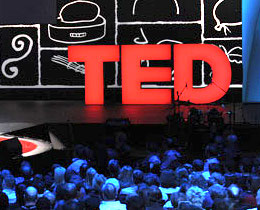
Sylvea here. I’d like to introduce Dr. Tom P. Abeles, editor of On the Horizon, a foresight journal on education. His #FutureFictionFriday story is a 2040 TEDTalk about continuous learning . Dr. Abeles shares several future innovations in education and highlights the valuable role museums play in PreK-Gray learning.
If you would like tips from Elizabeth to get you started with drafting your submissions, read “How to Write the Future.” Check out the other entries here and submit your story! Who knows….YOU could win $1,000 for your submission.Deadline: March 14th
Here is Tom”s story…
Education, today, is PreK->Gray where individuals are in a continuous learning mode, formal and informal. Its two major purposes are to provide for the ability for individuals to contribute to their own and a global society’s economic and to become active citizens in a global society. The IoT or Internet of Things makes this possible, connecting all in both click and brick space, a seamless network of humans and the larger environment, beyond technology.
What is important to understand is that the education system serves many functions as we go through life. It provides a variety of support from nurturing individuals while we are young to many activities in senior years. Its activities today are different from the past. It is not just a place to go in a larger social world, particularly with its diffused presence in cyber space.
The same holds for other islands of concentrated knowledge, museums, libraries and archival institutions. While we realize that educational institutions are not just “classes” or sites for knowledge distribution, we, also, forget that, for example, museums may have only a small percentage of their activities and work on public view. Much goes on beyond and behind those dioramas, interactive displays and public demonstrations.
Educational institutions tended to aggregate and package their materials. From a content perspective, they were almost clones as evidenced by such items as “classes” textbooks and national/international standards. On the other hand, while similarities existed in archival institutions, the uniqueness of their materials gives each a distinct character. More importantly, the networks of such organizations develop for sharing and collaboration, offering a varied and overlapping knowledge focus. This leverages all resources, which are amplified by the IoT, Internet of Things, which can virtualize and electronically manifest these opportunities across institutions and serve multiple needs of society from archival knowledge to new insights and from educating individuals to organizations.
About a half-century ago, education and the archival communities started finding common interests. This was accelerated by two major events, the emergence of a competency focus in education that broke the lock-step, age-defined cohorts and the rise of the Internet of Things. Competency required that individuals focus on areas of interest and develop appropriate levels of mastery. The network of museums provided institutions with similar content interests and also, for public consumption, varying focus on different populations from preschool to senior citizens.
More importantly, that vast area hiding behind the public displays provided resources that could not be duplicated but through the larger network could meet the needs of the seekers at the appropriate level. The rise of IoT removed a significant barrier to sharing of content.
With the rise of competency-based evaluations, new skills were introduced at all levels. The education system, while still offering core content also found a new need to help develop independent thinking skills and the ability to place learning in a larger societal context. This started to restore the increasing imbalance between the focus on content skills and civic participation. This was greatly helped by the growing relationship between museums and other archival institutions and the education system. All were struggling with the concerns for the need for a wider community focus. This brought the two major goals together.
What is interesting is that this convergence was foreshadowed by the entertainment industry, in particular Disney. Its theme park in Florida has, for example, been studied by architects, engineers and academics for its designs of traffic management, water and waste water management, personal services from accommodations and food management. It draws on knowledge from all disciplines and provides an educational footprint that has touched individuals from young children to adults, from the lay public to professionals. The entertainment industry has drawn on the entire education and archival spectrum to bring knowledge in what has been described as “edutainment” but which can meet the needs of knowledge seekers, PreK->Grey.
When knowledge is “packaged”, drawing from the entire reservoir within the museum and archival world, including artifacts as well as knowledge from experts, with the intended audience, be it primary schools or adults, we are seeing an inversion, a recalibration and a shift from where knowledge is drawn and a shifting in the institutional roles between the traditional and the newly integrated educational system.
Herein lies a critical change. Knowledge needs and capabilities for understanding are not defined by age-created boxes of capabilities. The many “Omni Theater” presentations at public venues such as museums are learning experiences of different levels and meet different needs in the present and future. Humanities faculty have understood this when persons study Shakespeare, Mark Twain’s Tom Sawyer and a plethora of creative works through changing eyes.
That shift began with the development of computers and handheld devices now called a “phablet”, the cross between the cell phone and a smart tablet. These were designed to biometrically link to the individual user, primarily students as young as 5 years old. Each came with its own “avatar”, a close cousin of the iPhone’s “Siri” and it was connected to a mentor, a guide that also monitored and supported the individual’s quests for knowledge and helped weave it into a pattern that gave focus to the search and mastery.
My avatar was a tortoise shell colored cat named Sophie and the package included a small stuffed replicate with a silver tag that read, “Hi, I am Sophie”. Even today Sophie, upgraded many times, still resides, now, in several spaces from cellphones to computers to intelligent machines such as my 3D research printer that has even reproduced a “Big Mac” (which I have not eaten). Over the years, Sophie was a constant, though I have had a number of mentors as my search has zigzagged through my career, today as nutrition scientist working at the NASA spaceport, which has an increasing number of manned flights, both government and private sector, including many international participants.
My father was a Hmong, originally, from Laos. He and other Hmong grew organic produce that they sold in the farmers’ markets. Why organic and was it different or better than non-organic. The questions became more complex when our local science museum got a mock-up of the Star Trek food synthesizer aboard the USS Enterprise. Then a team led by the Science Museum, but with collaboration from museums of anthropology, history and agriculture brought in an entire program on food, from growing it to consuming it from a global perspective.
 |
| Credit: Texas State Archives |
As a curious teenager, demonstrations that ended in audience sampling were always a highlight. But I drew the line at insects whether fried crispy or made into hamburgers. Today, preparing for long duration space flight, all options are open. The problems are complex and we have yet to understand what has been labeled UDGF, the undefined growth factor that seem to separate two seemingly identical samples of food or feed but which have different outcomes. Then, is there a difference between a steak produced by a 3D printer, one that is grown in a chemical soup and one from a side of beef?
Sophie uncovered a report from work in a developing country where village children were suffering from malnutrition except in one family. It turned out that the father, tending the rice fields would pick the small snails that were present and fed them to his young children- an unexpected protein source. Now we have started a discovery program using children and their families to identify food habits and to look at past practices.
In part, this was also inspired by the food stores in the United States promoting “ancient grains” in their products and the many claims of “super foods” such as Moringa and Chia found in upscale specialty foods. Since there are now seed exchanges for growers of heirloom vegetables and international seed storage sites to preserve genetic materials, using students (of all ages) around the world, we are creating a network that looks not just at the plants but the soils, weather conditions and farming practices that could prove useful in designing experiments for planetary exploration. Some of these experiments could come from this network.
We must now remember that Sophie, my avatar, is networked with all the avatars of individuals from the very young to senior citizens. These persons and their avatars are free to not participate but many do. Others join different or multiple networks. We now have a collective problem-solving and learning matrix that persists beyond what was once formal schooling.
My small effort is one of many emergent communities similar to the very early networks that formed to Search for Extraterrestrial Intelligence, SETI, or to find answers to, as Garrison Keillor’s Guy Noir would say, “life’s persistent questions”.
It’s a small world after all. Thank you.
*This essay was inspired, in part by Neal Stephenson’s book, The Diamond Age (or, a young ladies illustrated primer)
Skip over related stories to continue reading article










Comments